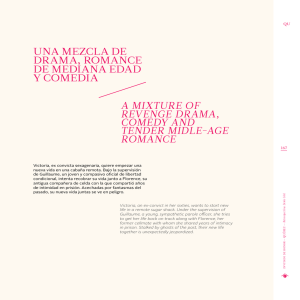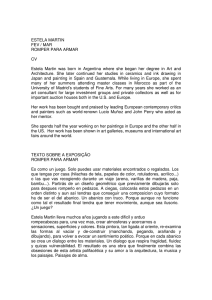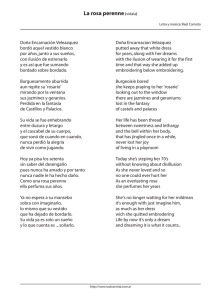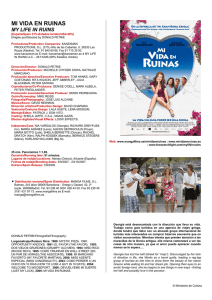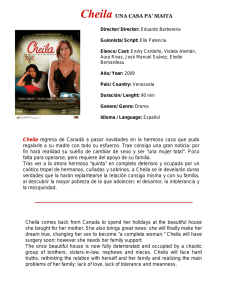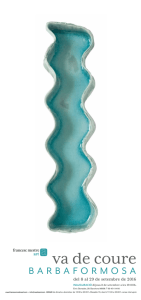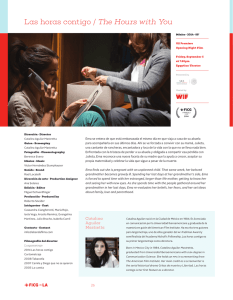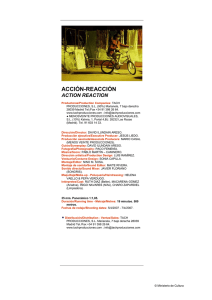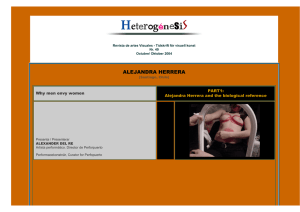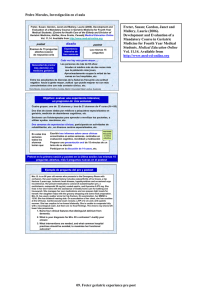personanormal
Anuncio
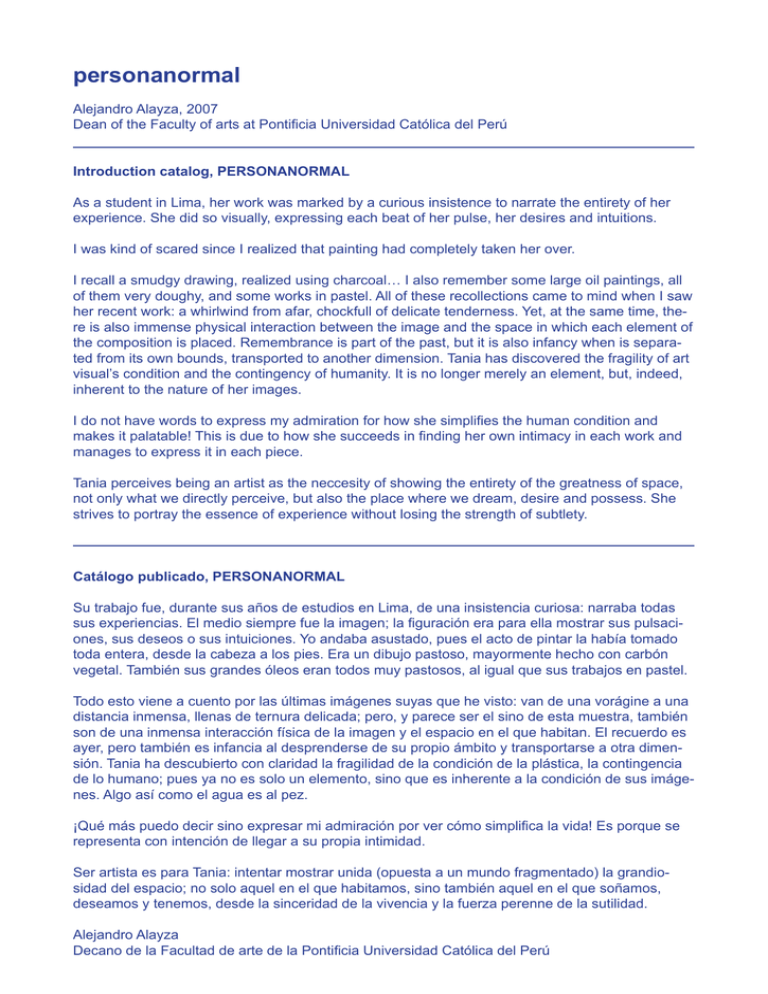
personanormal Alejandro Alayza, 2007 Dean of the Faculty of arts at Pontificia Universidad Católica del Perú Introduction catalog, PERSONANORMAL As a student in Lima, her work was marked by a curious insistence to narrate the entirety of her experience. She did so visually, expressing each beat of her pulse, her desires and intuitions. I was kind of scared since I realized that painting had completely taken her over. I recall a smudgy drawing, realized using charcoal… I also remember some large oil paintings, all of them very doughy, and some works in pastel. All of these recollections came to mind when I saw her recent work: a whirlwind from afar, chockfull of delicate tenderness. Yet, at the same time, there is also immense physical interaction between the image and the space in which each element of the composition is placed. Remembrance is part of the past, but it is also infancy when is separated from its own bounds, transported to another dimension. Tania has discovered the fragility of art visual’s condition and the contingency of humanity. It is no longer merely an element, but, indeed, inherent to the nature of her images. I do not have words to express my admiration for how she simplifies the human condition and makes it palatable! This is due to how she succeeds in finding her own intimacy in each work and manages to express it in each piece. Tania perceives being an artist as the neccesity of showing the entirety of the greatness of space, not only what we directly perceive, but also the place where we dream, desire and possess. She strives to portray the essence of experience without losing the strength of subtlety. Catálogo publicado, PERSONANORMAL Su trabajo fue, durante sus años de estudios en Lima, de una insistencia curiosa: narraba todas sus experiencias. El medio siempre fue la imagen; la figuración era para ella mostrar sus pulsaciones, sus deseos o sus intuiciones. Yo andaba asustado, pues el acto de pintar la había tomado toda entera, desde la cabeza a los pies. Era un dibujo pastoso, mayormente hecho con carbón vegetal. También sus grandes óleos eran todos muy pastosos, al igual que sus trabajos en pastel. Todo esto viene a cuento por las últimas imágenes suyas que he visto: van de una vorágine a una distancia inmensa, llenas de ternura delicada; pero, y parece ser el sino de esta muestra, también son de una inmensa interacción física de la imagen y el espacio en el que habitan. El recuerdo es ayer, pero también es infancia al desprenderse de su propio ámbito y transportarse a otra dimensión. Tania ha descubierto con claridad la fragilidad de la condición de la plástica, la contingencia de lo humano; pues ya no es solo un elemento, sino que es inherente a la condición de sus imágenes. Algo así como el agua es al pez. ¡Qué más puedo decir sino expresar mi admiración por ver cómo simplifica la vida! Es porque se representa con intención de llegar a su propia intimidad. Ser artista es para Tania: intentar mostrar unida (opuesta a un mundo fragmentado) la grandiosidad del espacio; no solo aquel en el que habitamos, sino también aquel en el que soñamos, deseamos y tenemos, desde la sinceridad de la vivencia y la fuerza perenne de la sutilidad. Alejandro Alayza Decano de la Facultad de arte de la Pontificia Universidad Católica del Perú

